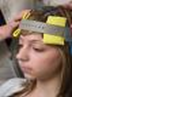Category menu
University of Nottingham Research on tic reduction techniques: Participants wanted
Posted on 13 October 2015
Researchers at the University of Nottingham are running exciting research investigating the effects of non-invasive brain stimulation techniques on reducing tics
Research participants wanted (over 16’s) for research at the University of Nottingham.
The technique we are using is called transcranial direct current stimulation (tDCS) which is a safe and painless method of stimulating the brain in a way which can alter activity for a short period of time. We are currently looking for participants who are willing to come to Nottingham for two experimental sessions which would last about 2 hours each. You would receive £40 for your participation and your help would be much appreciated in moving the research forward.
What is tCDS?
• tDCS stands for transcranial direct current stimulation. It uses a very weak electrical current which can affect the amount of electrical activity in the brain. It’s safe and painless. It’s applied through two electrodes covered with small sponges which have been soaked in salty water and placed on your head.
Picture of electrodes on the head in a similar study

Why are we using it?
• We think that tics are associated with increased activity or excitability in the part of the brain concerned with planning actions, the motor cortex. We want to find out if reducing the activity or excitability of this area might reduce the amount of tics.
What’s involved?
There are 2 sessions at least a week apart:
• The researcher will check your own individual response to tDCS by using a different technique called transcranial magnetic stimulation or TMS. TMS uses very brief magnetic pulses to stimulate the area of the brain responsible for movement. It makes a tiny muscle in your hand twitch. The researchers can measure the amount of this muscle contraction and its timing and this will indirectly tell us the level of excitability of the brain. The researcher will then use tDCS with you. Following this, the researcher will again use TMS to check your individual response to the use of tDCS.
• The researcher will also record your tics using video and a short questionnaire.
• This should take approximately 2 hours in total and you can watch films during tDCS and TMS to pass the time!
If you think you may like to take part or have any questions
Please contact us as soon as possible
Katherine Dyke


